 This page lists UK bike-rail restrictions on rail and preserved rail. Folding bikes travel free and without restriction on all train services unless stated.
This page lists UK bike-rail restrictions on rail and preserved rail. Folding bikes travel free and without restriction on all train services unless stated.
See Bikes on Trains Travel Guide. If you have any official or unofficial information on cycle carriage, please share it with us by email.
We strongly advise booking your bicycle in advance online if you can. You can currently do this with Great Western, South Western Railway, Trans-Pennine Express, Hull Trains and C2C. Virgin East Coast claims it will bring back bicycle bookings and we will update the information if they do. Most operators can sell tickets in any geographical area, so you don’t need to book the tickets with the company that operates the route your travelling on, but you MUST book a seat to reserve space for a bike.
Please note
- National Rail has made a reasonable job of bringing together all the bicycle threads on its PlusBike pages
- For cycling routes near stations, we’ve always suggested visiting Sustrans, where you could enter the station POSTCODE in a magic box and find all the associated cycle routes. The website now seems more leisure-orientated.
- Barry Doe’s web pages are full of information, but hard to follow. His excellent National Rail map gives a clear picture of all UK operators and routes.
LATEST UPDATES:
Scotrail launches dedicated Class 153 bicycle carriages in Highlands
First Great Western rolling stock updates
APOLOGIES FOR THE SLOW UPDATES LATELY… DO KEEP US INFORMED OF CHANGES
Primary Rail Operators
Greater Anglia
Routes: London (Liverpool Street) – Essex, Norfolk, Suffolk & Cambridgeshire
Online Bookings: ![]()
Folding bikes: ![]() No restrictions
No restrictions
Tandems and tricycles:![]()
Before you do anything else, watch Greater Anglia’s excellent and informative little video on bike carriage. Up to four cycles are accepted on local trains, and the spacious long-distance trains accept six. Free reservations are obligatory on services to London, and if you’ve got one you can travel anywhere during the peak-time restrictions. Ticket holders also used to benefit from the GA/ETA cycle recovery scheme – if your cycle broke down or was stolen in Norfolk, Suffolk or Cambridgeshire, both you and the bike (subject to availability, of course) were recovered and taken to the nearest station. Not any more, sadly, but we think Anglia still runs its own reservation line from a call-centre in Norwich, so your call should be routed to someone who really knows the network.
RESTRICTIONS: Bicycles are barred at busy times on trains arriving in London (either Liverpool Street or Stratford) between 07.45 and 09.45 and departing London or Stratford between 16.30 and 18.30 Monday to Friday. But bicycles may be carried at any time north and east of Shenfield. (Note that GA’s publicity appears to show that bicycles are banned both inbound and outbound in both the morning and evening peaks, but this is not so. The ban is only with the commuter flow.)
There are restrictions in and out of Cambridge, Monday to Friday on services from Audley End to Ely in either direction between 07.45 and 08.45. But note that the ban is only with the commuter flow.
Tel: 0345 600 7245 Reservations: 08700 40 90 90
Arriva Trains Wales
Routes: Cardiff to West Wales, Manchester & Holyhead, plus local services throughout Wales
Online Bookings: ![]()
Folding bikes: ![]() No restrictions
No restrictions
Tandems and tricycles: ![]() Not permitted
Not permitted
Long-distance services carry two bicycles, and reservations are free, and strongly recommended. On local services around Cardiff and the Valleys (evolving into the Cardiff Metro), bicycles are carried free without booking, but ‘subject to space’, and there are some peak-hour restroctions, although ATW doesn’t appear to list them. Last we heard, bicycles were banned on trains arriving in Cardiff between 07.30 and 09.30 and departing 16.00 to 18.00 on Monday to Friday, and (unusually) on Saturday at slightly different times: arriving in Cardiff between 10.00 and 16.00 and departing between 15.00 and 18.00. This may all change when Arriva is given the boot during 2023
Tel: 0333 311 202 Reservations: 0870 9000 773
email: customer.relations@arrivatrainswales.co.uk
Caledonian Sleeper
Routes: London Euston overnight to Glasgow, Edinburgh, Aberdeen, Inverness and Fort William
Online Bookings: ![]() Not required for booking bicycles on the sleeper
Not required for booking bicycles on the sleeper
Folding bikes: ![]() No restrictions
No restrictions
Tandems and tricycles: ![]() Not permitted
Not permitted
As you can imagine, there is huge demand for carrying bicycles on the sleeper to Scotland, and booking is now compulsory. You must turn the handlebars sideways before boarding, and come equipped with a tool to do it. The bicycle space is in the seated carriage, of which there are several on the Highland train, so make sure you use the right one. If you do, the carriage stays with you to your destination except on the West Highland Fort William section, where the seated carriage goes to Inverness, so unless you are already in the seated carriage you have to wake up at 5am when the train reaches Edinburgh to move your bike to a new carriage. Because of this long complicated train formation, it’s not possible to board with a bike at Watford Junction or Dalwhinnie, because the platforms are too short.
Folding bike carriage is not well publicised, but the luggage restrictions follow the normal generous Conditions of Carriage rules, giving an allowance of two items measuring up to 30 x 70 x 90cm. Folder-wise, that means a Brompton should get the green light, as should the most compact Dahons, but nothing else really. Where to put it? Two Bromptons will fit in a two-berth cabin, but it’s a squeeze, and getting to the loo in the small hours can be an adventure. Don’t put the bike in the loo, because it might fall over and jam the door shut…not good. If you unhook the ladder to the top bunk, you can store one (and possibly two) Bromptons under the bottom bunk. According to Caledonian there are other luggage areas on the train and the attendent will show you, but they never seem to be available at the critical time.
Tel: 0330 060 0500
c2c
Routes: London Fenchurch Street – Southend Central & Shoeburyness
Online Bookings: ![]()
Folding bikes: ![]() Enclosed in a container or case
Enclosed in a container or case
Tandems and tricycles: ![]() Not permitted
Not permitted
c2c welcome bicycles free of charge on services where they can be accommodated safely, but reservations are not possible. Bicycles are not permitted on weekday services that arrive in London between 07.14 and 09.30 or leave London between 16.30 and 18.34. If you plan to travel with a group of three or more cycles, please contact the Helpline.
Tel: 0345 601 4873
Chiltern
Routes: London Marylebone – Aylesbury, Oxford, Birmingham Snow Hill & Kidderminster
Online Bookings: ![]()
Folding bikes: ![]() No restrictions
No restrictions
Tandems and tricycles: Unknown
Bicycles are welcome on Chiltern Railways but not on trains arriving at London Marylebone or Birmingham Snow Hill between 07.45 and 10.00 or departing London Marylebone or Birmingham Snow Hill between 16.30 and 19.30 Monday to Friday. These restrictions apply to all intermediate stations and journeys. At other times, bicycles are carried free and without reservation. Chiltern has inherited the loco-hauled trains used by sister company Wrexham & Shropshire. These have room for around ten bikes, and they are now operating up to six of the Birmingham Moor Street to London Marylebone fast services. Does this mean Chiltern will relax its tough peak hour bike policy for these trains? We’re not sure, but do let us know.
Tel: 0345 600 5165 (information & telesales)
CrossCountry Trains
Routes: South & Southwest England to Northern England & East Scotland, and South Wales to the East Midlands & East Anglia
Online Bookings: ![]()
Folding bikes: ![]() No restrictions
No restrictions
Tandems and tricycles: ![]() Not permitted
Not permitted
Virgin used to allow up to four bikes in the Voyager trains, but under CrossCountry the trains have been altered by replacing the shop in Coach D with a smaller cycle storage area, while the old cycle area has become a secure cupboard for the onboard trolley. Although there is actually room for three, but CrossCountry will only take reservations for up to two, leaving one free on a turn-up-and-go basis. CrossCountry has a bit of a history of aggressively expelling cyclists from trains, even where they have reservations, so do beware. CrossCountry also uses a few older (and much better) High Speed trains, which have very generous bicycle space, although in theory the strict rules still apply. CrossCountry services are often the key to longer journeys, and hard to avoid without a diversion via London.
A free advance reservation is ‘compulsory for most journeys’ says CrossCountry vaguely.
TIP: Avoid CrossCountry altogether if you possibly can. Their fares are so ludicrously high it’s usually cheaper to travel via London
Tel: 0844 811 0124
email: customer.relations@crosscountrytrains.co.uk
East Midland Trains
Routes: London St Pancras – East Midlands & South Yorkshire, plus Liverpool – Norwich cross country and East Midlands local routes
Online Bookings: ![]()
Folding bikes: ![]() Unrestricted, but bikes must fit into luggage racks
Unrestricted, but bikes must fit into luggage racks
Tandems, tricycles and trailers: ![]()
Reservations are compulsory on long-distance services, but not available on local trains, where the rule is two bikes per train on a first-come, first-served basis. The company enforces this rule on all its trains, including Meridian trains, which offer more bicycle space, and some newly shorted HST sets which offer NO bike spaces. On all other trains, the two-bikes rule is strictly enforced, and you must now book in advance, and we’re told that bookings will not be accepted into or out of London at peak times, but there does not seem to be an actual ban.
Interesting point: EMT very fairly points out that it is unable to carry tandems or tricycles on the East Midlands Connect services, but claims they cannot be squeezed into Mainline services too and from London.
To make a reservation, you have to apply to a staffed station, use the telephone number below, or use the EMT website, but that seems to require some sort of log-in. No idea how that works.
Reservations: 08457 125 678 or try cycle.reservation@eastmidlandstrains.co.uk
Routes: London St Pancras International, Stratford International, Ebbsfleet International & Ashford International to Paris, Brussels, Lille, Avignon*
Online Bookings: ![]() For Eurostar services only
For Eurostar services only
Folding bikes: ![]() Officially folders must be bagged, but very compact machines will fit in the overhead racks. However, Eurostar has been making life more difficult for regular commuters lately by forcing them to put their bikes through the full security procedure.
Officially folders must be bagged, but very compact machines will fit in the overhead racks. However, Eurostar has been making life more difficult for regular commuters lately by forcing them to put their bikes through the full security procedure.
Tandems and tricycles: ![]() Not permitted, but tandems which split or break apart are. If you can reduce your tandem to 200cm long and pack it as a single item it goes as a bike.
Not permitted, but tandems which split or break apart are. If you can reduce your tandem to 200cm long and pack it as a single item it goes as a bike.
If you don’t mind dismantling your bike and squeezing it into a bag measuring 120cm x 90cm (the accepted dimension for large luggage items on most European long distance trains) a conventional bike can be packed down and carried on Eurostar. If you prefer to keep the wheels on and your hands clean, you’ll have to pay £20 and travel with the Eurodespatch service. The maximum length is 200cm and since 2008 Eurostar has operated a booking system (opening 10 days prior to departure) to put the bike on the same train as you (only London to Paris & Brussels). Bikes should be checked-in at least 60 minutes before departure.
Tips – nip up the platform with your receipt at journey’s end, and you can claim the bike back directly off the train when it is unloaded, to save the time, worry and hassle of getting it back from the Eurodespatch office. An on-spec service (delivery within 24 hours) is also available for the same price, and serves Lille, but there’s no guarantee when, or indeed if, your bicycle will turn up.
A useful tip if travelling further afield by high speed train is to change at Lille Europe if possible, rather than Paris, as many long-distance services stop in Lille, some offer a cross-platform change.
Cycling between termini in Paris is rather like London – about the same distances, and with similar traffic levels. It can potentially save you an hour on your journey, enabling you to catch the preceding (hourly) TGV service.
The Eurodespatch service is not available from Ebbsfleet, Ashford, Stratford, and le Frethun, Avignon, and other less-used/seasonal stopping points.
If you’re planning to use Eurostar to cross the Channel, it might make more sense to travel by bike or domestic rail services to Folkestone and catch a Channel Tunnel Shuttle train instead. Sadly, you can’t drive on yourself like the motorists, but the arrangement is that you are collected from your local hotel, and the bikes are placed in a trailer, while you and your luggage ride in a minibus. Up to six bikes can be taken, but you do have to give 48 hours notice. www.eurotunnel.com/uk/traveller-info/vehicles/bicycles/
Tel: 08705 850850 or 0844 822 5822
email: new.comments@eurostar.co.uk?
Eurostar ‘Bikes on Trains’ page
Routes: Brighton – Gatwick Airport – London – Luton Airport Parkway – Bedford (cross-London services), London (Kings Cross & Moorgate) – Stevenage, Cambridge, Peterborough & Kings Lynn
Online Bookings: ![]()
Folding bikes: ![]() At peak times, big-wheeled folding bikes are banned, and smaller folding bikes may need to be folded at the ticket barriers
At peak times, big-wheeled folding bikes are banned, and smaller folding bikes may need to be folded at the ticket barriers
Tandems and tricycles: ![]() Not permitted
Not permitted
Govia Thameslink (confusingly branded as Great Northern Thameslink or even Thameslink & Great Northern) is now forcing folding bike customers to fold their bikes before passing through the barriers (see also attempts by Southern and Southeastern). The company claims that this has always been the rule, but it has not previously been enforced. Owners of Bromptons and other folding bikes that can be wheeled should bear in mind that they ARE allowed to wheel the bike on its rollers. Whatever the man on the barrier might say, there is no actually compulsion to CARRY the bike. And in June 2015, we head that the company had tightened the screw by banning folding bikes with wheels bigger than 20-inches. This currently only applies during peak-hours, and may be patchily enforced.
Thameslink is happy to carry bicycles between Bedford and Luton Airport Parkway inclusive at any time. Elsewhere, the company cannot carry bicycles on trains travelling towards London (if boarding at or south of Stevenage or Hertford North) that arrive in London stations between 07.00 and 10.00 (Monday-Friday), or on trains travelling away from London departing from Zone 1 London stations between 16.00 and 19.00 (Mon-Fri). Cyclists are asked to use the section of the train with tip-up seats, identified by a cycle symbol on the outside of the train. Interestingly, Thameslink does not mention that bikes are now banned in and out of Brighton at peak times (see Southern entry). Other restrictions:
- Monday to Friday on services departing Waterbeach or Ely towards Cambridge between 07.45 and 08.45 Monday-Friday
- Any time between Drayton Park & Moorgate (this doesn’t apply to folding bikes of 20-inch wheels or below)
Tel: 0845 026 4700
Routes: London Paddington – Bristol, Reading, Oxford, South Wales, the Cotswolds & the West, plus local West Country services
Online Bookings: ![]()
Folding bikes: ![]() Folding bikes are defined as having wheels with a maximum size of 20-inches. Larger wheeled folders will be treated as normal bikes
Folding bikes are defined as having wheels with a maximum size of 20-inches. Larger wheeled folders will be treated as normal bikes
Tandems and tricycles: ![]() Tandems are permitted on High Speed Trains only
Tandems are permitted on High Speed Trains only
LONG-DISTANCE SERVICES: Advance reservations are free, and can be made up to two hours before the train begins its journey, or before 18.00 the day before if the train starts before 10.00. Reservations are now obligatory again, following withdrawal of the HST125 High Speed Trains, as all long-distance rolling stock is new. Space is superficially adequate, but you now have to hang your bike, so if it’s heavy, remove panniers etc, and you might want to get someone to help.
In theory the bike spaces are in Carriage B and/or H, but watch out, because trains are often formed of two five-coach units, and you can’t get between the two. To maske matters much worse, software glitches mean that reservations and even carriage letters can be WRONG, or even evaporate en route.
Oddly, you can relax more on local trains. Short formation Castle Class trains of four or five carriages from the old HST rolling stock have taken over some busy local routes, and space for bikes is much more generous than with the two- and three-car trains you might be expecting. Everyone seems to love these trains, but they will always be thin on the ground.
The West Country is also receiving the roomier Thames Turbo units displaced from Thames valley services. These have lots more room for people and bikes, but there are still many less generously proportioned old units around on various routes.
COMMUTER SERVICES: On the approaches to Paddington, rhe new electric trains are longer, and generally more spacious, and bikes can be carried on all off-peak services in the carriage vestibules, provided they do not inconvenience other customers. However, on Mondays to Fridays, bicycles may not be carried on trains advertised to arrive at London Paddington between 07.45 and 09.45 or to depart Paddington between 16.30 and 19.00.
Tel: 08457 000 125
Hull Trains
Route: London Kings Cross – Grantham, Doncaster, Selby, Brough & Hull
Online Bookings: ![]()
Folding bikes: ![]() No Restrictions
No Restrictions
Tandems and tricycles: ![]() Not permitted
Not permitted
Hull Trains welcomes cycles on all services, and the free advance reservation is no longer obligatory, but is still recommended. Up to two bicycles can be carried in the Train Manager’s Office in coach ‘D’. Please ring 0845 710 222 (08.00-22.00 Monday to Friday, 08.00-18.30 Weekends and Bank Holidays) to book.
Tel: 0345 0710 222
Trans-Pennine Express
Routes: Manchester Airport – North East, North West and Scotland
Online Bookings: ![]()
Folding bikes: ![]() No restrictions
No restrictions
Tandems and tricycles: ![]() Not permitted
Not permitted
Like many railway companies, TPE has had to bring in bike restrictions to square the circle between increased traffic and limited rolling stock availability (made much worse by the current government cancelling electrification). Bicycles are now banned – presumably network-wide and only on weekdays – from 07.00 to 09.00 and 16.00 to 19.00. Space is very restricted at other times, with only two bikes allowed on most trains, but they travel free. Reservations are now obligatory, and must be made at least 24 hours in advance. The Scottish services are best avoided with or without a bike as they can be very busy. Despite massive growth in passenger traffic and tightening up of bike carriage rules, folding bikes are still welcome on TPE (arguably more so), provided the bike is folded and placed in luggage racks or behind the seat backs.
New trains are being introduced almost everywhere, but we still have little information on space, although in general, trains are longer and more roomy, so if you’ve travelled before, you may find life easier.
Tel & Reservations: 0345 600 1674
Route: Kings Cross – Yorkshire, Hartlepool, Sunderland
Online Bookings: ![]()
Folding bikes: ![]() No restrictions
No restrictions
Tandems and tricycles: ![]() Tandems welcome
Tandems welcome
‘Cyclists are welcome!’ Grand Central used to say, but they’ve become less welcoming. The fleet of older High Speed Trains used to carry up to six bikes in the ‘country end’ power car, but for reasons of its own, the company now says only four bikes are carried, two at each end (yes, a long run if you go to the wrong end). Newer trains have three cycle spaces in coach B.
Short platforms at Eaglescliffe, Thirsk and Hartlepool mean that guards will put cycles to and from these destinations at the London end of the train. Surely that means the true capacity is 12 bikes? Well, yes it does, and the same applies to all other HST’s, but no operators seem willing to exploit the space in these trains to the full. Grand Central went to some lengths to say it welcomed tandems and trailers (not exceeding one metre in any dimension), but this has also gone very quiet, athough in practise, as above, space is not an issue.
Tel: 0845 603 4852
Heathrow Connect (London)
Route: London Paddington – local stations to Heathrow Airport
Online Bookings: ![]()
Folding bikes: ![]() No restrictions
No restrictions
Tandems and tricycles: ![]() Not permitted
Not permitted
Heathrow Connect now limited bicycles to one per train, with standard Paddington peak time restrictions on weekdays: bicycles are banned from trains departing Heathrow between 07.30 and 10.00, or departing Paddington between 16.30 and 19.00. Expect everything to change when Crossrail starts running.
Tel: 0345 700 0125
email: queries@heathrowconnect.com
Heathrow Express (London)
Route: London Paddington – fast to Heathrow Airport
Online Bookings: ![]()
Folding bikes: ![]() Plenty of luggage space for folding bikes. Compact machines fit the overhead racks
Plenty of luggage space for folding bikes. Compact machines fit the overhead racks
Tandems and tricycles: ![]() Not permitted
Not permitted
As with Heathrow Connect, there is now officially only one cycle space on Heathrow Express trains, even though the company formally allowed a minimum of three. Peak hour bans are as for Heathrow Connect.
As the single space will generally be offered to cyclists catching flights, anyone else will be lucky to get on board even off-peak, unless they have a folder of course. The folding bike rules are tighter than the national conditions, the maximum dimension being limited to length breadth height = not more than 158cm. If your bike exceeds this (and in theory at least, even the most compact bike will), or you need help putting it on, or it takes up a seat, your bike will liable to a full passenger fare. Heathrow Express also makes a point of banning all ‘powered vehicles’ except wheelchairs. Cyclists not travelling onwards by air may use the service to travel free between terminals at the airport, subject to space being available for airline passengers.
This can be useful, because it’s cheaper to take a local train to Feltham (for Terminal 4) or Hayes & Harlington (other Terminals) cycle into the airport, and use Heathrow Express/Connect if you need to transfer to another terminal. Taxis and other motorised traffic are allowed to share the long cycle tunnel from the Hayes direction, but they’ll just have to queue, won’t they?
Tel: 0345 600 0650
email: queries.hex@airexp.co.uk
Island Line
Route: Isle of Wight only
Online Bookings: ![]() You will be taken to the South Western Railway web pages
You will be taken to the South Western Railway web pages
Folding bikes: ![]() No Restrictions
No Restrictions
Tandems and tricycles: ![]() Not permitted
Not permitted
The smallest, friendliest and most reliable railway company in the UK, until recently Island Line operated aging Underground trains on the Isle of Wight. Up to four bicycles can be carried free and without booking at the Shanklin end of all trains, subject to the discretion of the guard. In practice, the number carried off-peak is sometimes much greater. A very entertaining ride, but what a shame the line doesn’t still go through to Ventnor…that WOULD be useful for cyclists.
Tel: 0845 6000 650
email: comments@island-line.co.uk
London Midland
Routes: London Euston – Birmingham, Birmingham – Liverpool and local services in the West Midlands
Online Bookings: ![]()
Folding bikes: ![]() No Restrictions
No Restrictions
Tandems and tricycles: ![]() Not permitted
Not permitted
Cycles are carried free of charge on all off-peak services. Restrictions apply Monday to Friday 07.00 to 09.59 on services to London Euston and 16.00 to 18.59 on services leaving London. The company also ‘recommends’ avoiding Birmingham at peak times, which is very sensible advice.
Tel: 0844 811 0133
London North Eastern Railway Formerly East Coast, Formerly Virgin Trains East Coast
Routes: London Kings Cross – Yorkshire – North East England – Scotland
Online Bookings: ![]() Will the nationally-owned east coast operator bring them back?
Will the nationally-owned east coast operator bring them back?
Folding bikes: ![]() No restrictions
No restrictions
Tandems and tricycles: ![]() We think tandems are still permitted (subject to length restrictions), and tricycles still seem to be unofficially tolerated
We think tandems are still permitted (subject to length restrictions), and tricycles still seem to be unofficially tolerated
16th May 2018 was a red-letter day for the railways of the UK! Virgin was chucked off the East Coast franchise, and ever since, the line and all its branches and links are being run by the state. We’re told this will mean no changes in contact details or bike carriage rules in the short term, so expect everything to stay the same for now.
Since privatisation in the 1990s, the East Coast has been a relatively good route for bicycle carriage. Virgin brought in rather stricter rules, magically reducing bike spaces on diesel High Speed Trains from five to three, although the electric trains still carry five.
Advance reservations are compulsory and spaces must be reserved in advance, although you can now book space as little as ten minutes before departure at a booking office or travel centre. Bike carriage arrangements are a bit unusual, and its very important to know whether you’re catching a diesel train or an electric train (if you don’t find out in advance, the electrics shouldn’t(!) emit any smoke, and make a loud cooling fan noise rather than a chuggy noise). In electric trains the cycle space is in the guards office at the London (first class) end of the train. With diesel trains, the bicycle space is in coach B at the OTHER end of the train – ie, nearest to Edinburgh. Either way, there should be platform staff to help wherever you board or alight, and they will help you load the bike… this is not a DIY operation. Make sure to get yourself down the train to the door nearest the bike on arrival, or you will hold everything up and get shouted at.
Some platforms on this 400 mile railway line are short, so before travelling you need to know the type of train, and the length of the platform.
Virgin Trains East Coast inherited East Coast’s on-line cycle reservation scheme, but changed its web booking system, which may well return.
Tandems are allowed, but subject to a length restriction, and they count as two bikes, which is a bit unfair.
Tel: 03457 225 225
LONDON (TfL Services only)
Transport for London has been busy integrating the rules for its diverse network of underground and overground railways in the capital. Broadly speaking, bicycles banned outright in some areas and allowed in others, outside of Monday to Friday peak-hours: 07.30 to 09.30 and 16.00 to 19.00. Folding bikes are allowed everywhere at all times. All the details can be found on the excellent Transport for London web pages.
Docklands Light Railway (London)
Routes: Light rail network throughout East London
Online Bookings: ![]()
Folding bikes: ![]() Enclosed in a container or case
Enclosed in a container or case
Tandems, trailers and tricycles: ![]() Not permitted
Not permitted
Until recently only folding bikes were carried on the DLR, and they needed to be ‘totally enclosed in a cover’, but following a successful trial, full-size bikes are now allowed on the DLR system throughout on weekends and Bank Holidays, and before 07.30, between 09.30 and 16.00 and after 19.00 Monday to Friday.
Tel: 0207 222 1234
email: cservice@dlr.co.uk
London Overground
Routes: Most local rail services in and around London
Online Bookings: ![]()
Folding bikes: ![]() Welcome everywhere at all times
Welcome everywhere at all times
Tandems, trailers and tricycles: ![]() Not permitted
Not permitted
Bicycles are banned on the entire Overground network on Monday to Friday from 07.30 to 09.30 and 16.00 and 19.00. The only exception is trains on the Liverpool Street towards Chingford, Cheshunt and Enfield Town where bikes are allowed to travel contraflow in the peak: out from London between 07.30 and 09.30, and into London between 16.00 and 19.00. Elsewhere there is a temporary ban between South Tottenham and Barking while electrification work progresses (very slowly). Opening of the Elizabeth cross-rail line is likely to cause a few changes.
Tel: 0845 6014867
London Underground
Online Bookings: ![]()
Folding bikes: ![]() Must be folded. It is advisable to cover the bike whilst on the Underground, although this is not a regulation, and the folded bike must measure less than two metres long
Must be folded. It is advisable to cover the bike whilst on the Underground, although this is not a regulation, and the folded bike must measure less than two metres long
Tandems, trailers and tricycles: ![]() Not permitted
Not permitted
The Underground network is divided into two areas. Bikes are banned at all times from the central area bounded by (but not including) the Circle line, plus some other places outside the central area, and sometimes a long way out: Piccadilly services in the Heathrow airport complex and throughout the central zone from Barons Court to Oakwood (just about everywhere in practise), the entire Northern line south of East Finchley and Golders Green, Jubilee services between Finchley Road and Canning Town, Bakerloo south of Queen’s Park, Central services from White City to Leyton, the entire Victoria line, Waterloo & City, and a few other isolated pockets. Elsewhere, bicycles are allowed everywhere at all times other than during the standard peak-hour banned period.
Tel: 0207 222 1234
Other services: Croydon tram network, Emirates cable car, river boats
Surprisingly, bicycles are allowed on the Emirates Air Line cable cars at any time. Also rather surprisingly, bicycles are banned from the entire Croydon tram network.
Tel: 0207 222 1234 (Underground) or 0845 6014867 (Overground)
Merseyrail
Routes: Local services around Liverpool and the Wirral
Online Bookings: ![]()
Folding bikes: ![]() No restrictions
No restrictions
Tandems and tricycles: Unknown
Cycles are carried free at any time, space permitting, and the company reserves the right to impose restrictions at busy times.Tel: 0151 702 2071
Northern Rail
Routes: Local services in Northern England
Online Bookings: ![]()
Folding bikes: ![]() No restrictions
No restrictions
Tandems and tricycles: Unknown
Northern is working hard to encourage people to cycle to and from its nearly 500 stations, but space on trains is limited, especially at peak times, so the recent emphasis has been on cycle parking. Leeds Station briefly had a ‘Cycle Point’ offering Dutch style bike parking, hire, repair and cycle shop, but this welcome facility closed in 2018. So far, despite the very limited space (officially two bikes per train), there are no bike bans on services and staff are encouraged to be helpful, though there may still be problems on peak hour trains, and watch out for the busier leisure routes. Caution should be exercised when taking bikes to popular cycling destinations like Delamere Forest, the Peak District, Settle to Carlisle, and others. Allow yourself an alternative train in case everyone else fancies using your planned train! As elsewhere, folded bikes are not restricted, and this might be a better answer if you travel regularly. Having said that, one commuter using the Shipley/Bradford/Ilkley corridor into Leeds (admittedly just after the peak) say guards are mostly pretty reasonable as long as cyclists use their commonsense.
Caution is required if traveling too and from local stations on the Manchester to Huddersfield line. These formerly Northern-served stations are now mostly served by Trans-Pennine Express, which has just introduced compulsory bike reservations booked 24 hours in advance
Tel: 0845 000 0125 Reservations: 0845 600 8008
email: customer.relations@northernrail.org
Southeastern
Routes: London – Kent & South East England
Online Bookings: ![]()
Folding bikes: ![]() No restrictions, but despite having relaxed its stance on folding bikes on the platforms, the rules have just been tightened up again. According to SouthEastern, cyclists were abusing the rules by riding their folding bikes on the platform (even, it is claimed, falling onto the tracks) and putting the bikes unfolded onto busy trains. This all seems very unlikely when such issues are almost unknown elsewhere, but the result is that folding bikes must now (technically at least) be carried at all times on stations operated by SouthEastern, although the only place this rule is seriously enforced seems to be Cannon Street.
No restrictions, but despite having relaxed its stance on folding bikes on the platforms, the rules have just been tightened up again. According to SouthEastern, cyclists were abusing the rules by riding their folding bikes on the platform (even, it is claimed, falling onto the tracks) and putting the bikes unfolded onto busy trains. This all seems very unlikely when such issues are almost unknown elsewhere, but the result is that folding bikes must now (technically at least) be carried at all times on stations operated by SouthEastern, although the only place this rule is seriously enforced seems to be Cannon Street.
There is, however, a glimmer of hope. If, for whatever reason, you find it impossible to carry your bike any distance, SouthEastern says its Customer Services department will issue you with a letter that can be shown to platform staff. The intention is that you will then be allowed to wheel your bike to the train, but whether this works in practise remains to be seen. The anti-folder rule and exemption letter are still very new, so some staff may cheerfully wave folders through, others will demand they be carried, and a very small number will know that exemptions are allowed. A recipe for chaos… do keep us informed.
Tandems and tricycles: ![]() Not permitted
Not permitted
Cycles are carried free, without booking, on all services except those timed to arrive in London between 07.00 – 09.59, or to depart 16.00 – 18.59 Monday to Friday. These rules apply on any part of the journey, with the following exceptions: Subject to space, you may board peak time trains beyond Gillingham, Otford or Tonbridge, if travelling to stations in East Sussex or Kent.Tel: 0845 000 2222
ScotRail
Routes: Most services in Scotland (but no longer for London Euston – Scotland sleepers – see Caledonian Sleepers)
Online Bookings: ![]()
Folding bikes: ![]() Enclosed in a container or case
Enclosed in a container or case
Tandems and tricycles: ![]() Not permitted
Not permitted
Cycles are carried free on all ScotRail services, but space is limited (ScotRail aim to provide between two and eight spaces per train), so free reservations are essential on long-distance trains to Inverness, Aberdeen, Stranraer, the West Highlands and Far North.
In the summer months for the last few years, a special road vehicle has carried cycles between Inverness and Wick/Thurso, but with an increase to four daily trains, and at least four bike spaces on each, this is no longer required.
We’re glad to see that the reservation number (08457 550033) takes you through to a real Scottish person in Fort William who actually knows the network and can see passing trains out of the window. First ScotRail has also teamed up with the ETA to provide a ‘get you home’ service. If you are unable to complete your journey by bike, due to an accident, vandalism or irreparable breakdown, you will be taken to your destination, the nearest Scotrail station, or the nearest Scottish city, if it’s late in the day. The service does not apply to the islands! All you need to do is phone 08000 717 212 and give details of your valid rail ticket. From February 2009, Scotrail became the first UK railway company to officially sanction the carriage of electric bicycles on its trains. Great news in a hilly country.
A fascinating that launched in 2020 is a dedicated bicycle carriage on the West Highland line from Glasgow to Oban, Fort William and Mallaig, and possibly also the Kyle of Lochalsh line, and the Far North line from Inverness to Thurso and Wick. The intention is to utilise single-car Class 153 diesel units, which promises to make the carriage of bicycles and other outdoor sports equipment much easier in the future.
Tel: 0845 601 5929 Reservations: 08457 550033
email: scotrailenquiries@firstgroup.com
Southern (now incorporating Gatwick Express)
Routes: London – Surrey, Sussex & South East England
Online Bookings: ![]()
Folding bikes: ![]() Folding bikes are carried free of charge without restriction, but since 2006, folding bikes ‘bigger than a Brompton’ have occasionally been turned away and Brompton owners forced to fold their bikes at the barrier and carry them to the train, particularly at London Bridge, Victoria and Brighton. This tough line appeared to have been dropped, but folding bike owners have reported continuing problems at London Bridge. If you find yourself a victim of this discriminatory policy, please report it to Southern in writing, giving the time, station, and if possible the name of the offending employee.
Folding bikes are carried free of charge without restriction, but since 2006, folding bikes ‘bigger than a Brompton’ have occasionally been turned away and Brompton owners forced to fold their bikes at the barrier and carry them to the train, particularly at London Bridge, Victoria and Brighton. This tough line appeared to have been dropped, but folding bike owners have reported continuing problems at London Bridge. If you find yourself a victim of this discriminatory policy, please report it to Southern in writing, giving the time, station, and if possible the name of the offending employee.
Tandems and tricycles: Unknown
Who’d travel on Southern for ANY reason in 2017? Be very cautious with a bicycle because some routes are seeing daily multiple cancellations with patchy road replacement, and serious overcrowding on other services.
A ‘limited number’ of cycles are carried free on all services except on trains due to arrive into London Victoria, London Bridge or Brighton between 07.00 and 10.00, or due to depart from London stations or Brighton between 1600 and 1900 on Mondays to Fridays. Reservations for cycles are not required. Former Gatwick Express services now run through to Brighton, and have considerable luggage capacity, but are bound by the same peak hour rules as other Southern services.
Tel: 08451 272920
South Western Railway
Routes: London Waterloo – South West London and South West England
Online Bookings: ![]()
Folding bikes: ![]() May be carried at any time, free of charge, provided they ‘can be stowed as luggage’.
May be carried at any time, free of charge, provided they ‘can be stowed as luggage’.
Tandems and tricycles: Unknown
Formerly a haven for cyclists, the South West Trains area has seen increasing restrictions as new trains are introduced. Currently space is limited on trains from Waterloo to Salisbury/Bristol, Exeter and Plymouth; between Reading and Brighton; between Totton and Romsey (via Southampton); and on most Waterloo to Southampton trains. Reservations are obligatory on all but some Waterloo to Southampton trains, but booking is now free.
Note, however, that there are some odd anomalies with SWT’s discount ‘Megatrain’ tickets. You sometimes wonder if they put restrictions on these things just to differentiate the product from the full-fare job. Megatrain tickets have previously not included bicycle carriage on the busy Southampton or Portsmouth routes, even on a train where bicycles are welcome. The Megatrain website now makes a point of clarifying that bicycles ARE allowed from Waterloo to Southampton/Weymouth and Waterloo to Havant/Portsmouth. (It adds that bicycles are banned on Megatrain tickets on East Midlands Trains and Virgin Trains, which doesn’t concern us here). A few other specifics:
LONDON SUBURBAN AREA: Bicycles are banned from boarding trains trains due to arrive at Waterloo from 07.15 to 10.00, or depart Waterloo between 16.45 and 19.00 Monday to Friday (note the slightly extended ban duration) within the suburban area bounded by Dorking, Reading, Hook, Alton and Guildford (previously Woking). A ‘nod and a wink’ policy existed for many years on the ground, and bikes were usually allowed aboard at the guard’s discretion, but this no longer seems to be the case. There is now also an OUTWARD BOUND ban on trains leaving Clapham Junction between 07.45 and 09.00 Monday-Friday, as far as Clapham Junction, Strawberry Hill and Feltham.
LONDON-SALISBURY-EXETER: Bike space can vary from two upwards, and as a rule, longer trains on longer journeys will convey more bicycles.
LONDON-GUILDFORD-PORTSMOUTH & LONDON-SOUTHAMPTON-WEYMOUTH: These lines are now worked by Class 444 (5 car) and Class 450 (4 car) trains. The Class 444 offers six cycle spaces situated in the 3rd and 4th coaches (counting from 1st class, which is almost always at the London end), and a 10-coach train will have double the space. Cycles must not be placed in the disabled space, in the door areas (except by agreement with the guard), or behind the drivers door. The shorter Class 450 officially offers only two bike spaces, but with careful positioning three or fours can be squeezed in, and the guard will usually allow this, provided the gangways are not obstructed. The only exceptions to these rules are when travelling too or from three stations with short platforms – Bedhampton (London-bound platform), Beaulieu Road and Shawford. Cycles should usually be placed in the first door of the 2nd carriage in the direction of travel.
South West Trains Cycle Restrictions Map (PDF)
Tel: Reservations: 0845 6000 650
email: via web site
Translink (Northern Ireland)
Routes: RAIL & BUS SERVICES – Belfast – Larne, Bangor, Derry & Cross-border Enterprise trains to Dublin
Online Bookings: ![]()
Folding bikes: ![]() No restrictions
No restrictions
Tandems and tricycles: ![]() Tandems and motorised bicycles are not permitted on trains or road coaches.
Tandems and motorised bicycles are not permitted on trains or road coaches.
Hold on… why does Northern Ireland have a fully integrated bus and rail system while we have to put up with all this privatisation nonsense on the mainland? You’ll have to ask your MP.
Bikes are carried on all long-distance Goldline Express Coaches, and all trains, but not before 09.30 on weekdays. Trains generally carry four bicycles, while coaches carry two. Bikes travel free on all services, but note that the reservation system has been discontinued, so carriage is on a strictly, first-come first-served basis. Large groups are advised to contact Translink in advance and discuss their requirements. A template for all UK transport operators surely?
Tel: 028 9066 6630
Irish Rail (Republic of Ireland)
Routes: Key routes south and west from Dublin, plus cross-border Enterprise trains to Belfast
Online Bookings: ![]()
Folding bikes: ![]() No restrictions
No restrictions
Tandems and tricycles: ![]() Not clear, but better assume not
Not clear, but better assume not
Not quite the right section we know, but if travelling south of the border, please bear in mind that after the gradual change from carriages with guards vans to multiple unit trains, problems for cyclists have built up in the Republic of Ireland. The rules have been widely ignored, to the anger of rush-hour passengers, causing so many problems that Irish Rail has cracked down on offenders. Luckily the restrictions are very simple (an advantage of having one national operator). Bikes are not allowed on trains arriving in Dublin before 09.30 in the morning, and between 16.00 and 19.00 in the evening.
Bike space on Intercity services (effectively Cork-Dublin and Dublin-Belfast), and pre-booked bikes on the Cork-Dublin corridor are allowed on peak hour trains. That’s about all you have to remember for the whole country.
For full details and local gossip, see the bikes on trains page for campaign group Rail Users Ireland.
Valley Lines
(Now part of Arriva Trains Wales – see above)
Virgin Trains (West Coast)
Routes: London Euston – West Midlands, North Wales, North West England & Scotland
Online Bookings: ![]()
Folding bikes: ![]() No restrictions
No restrictions
Tandems and tricycles: ![]() One is allowed on Pendolino trains
One is allowed on Pendolino trains
West Coast services carry up to four bikes, with a free compulsory advance reservation system.
TIP: To escape Virgin’s blood pressure-raising automated telephone booking system, say ‘agent’ at the start. This, we’re told, should put you through to a nice lady in Scotland.
TIP: When making a cycle booking, use 0871 977 4222 (10p/min), which costs a modest 10p/minute. Save time by saying ‘help with something else’ when the automated woman starts talking. But be warned – if you’re adding a cycle reservation to an existing ticket, the telephone staff will give you a reference number to present at the station. A cyclist has recently been turned away at Euston trying to board with the number only. Staff may insist on a bicycle reservation ticket… More than their jobs are worth, etc etc.
TIP: Virgin has a fleet of Voyager and Pendolino trains. Both carry a yellow rectangle on the front (or rear) at the opposite end to the bike space. This is usually at the ‘country’ (ie furthest from London) end of the train.
Tel: 0871 977 4222
email: customer.relations@virgintrains.co.uk
Virgin Trains East Coast
Formerly East Coast
SEE LONDON NORTH EASTERN RAILWAY
Private & Preserved Railways
 Symbol indicates an interchange with the National Rail network. If you’re interested in small railways, you might be interested in our magazine Miniature Railway!
Symbol indicates an interchange with the National Rail network. If you’re interested in small railways, you might be interested in our magazine Miniature Railway!
Bluebell Railway
Routes: ![]() East Grinstead – Sheffield Park
East Grinstead – Sheffield Park
Gauge: Standard – South from East Grinstead into delightful countryside
Folding bikes: ![]() No restrictions
No restrictions
Tandems and tricycles: Unknown
All trains have a guard’s van, and up to 20 bicycles (or smaller numbers of tandems or tricycles) can be conveyed without booking, at a charge of 50p (return) or 30p (single). Larger parties (up to 60 bikes) can be carried in a parcels van by special arrangement.
Tel: 01825 720800
Bodmin & Wenford Railway
Routes:![]() Bodmin Parkway – Bodmin – Boscarne Junction
Bodmin Parkway – Bodmin – Boscarne Junction
Gauge: Standard – the cross-platform connection at Bodmin Parkway eliminates a long hard climb into Bodmin
Folding bikes: ![]() No restrictions Tandems and tricycles: Unknown
No restrictions Tandems and tricycles: Unknown
The Bodmin & Wenford Railway welcomes cyclists. Carriage of bikes, tandems and trikes is free of charge, although large parties are advised to book in advance.
Tel: 01208 73666
Bure Valley Railway
Routes:![]() Wroxham – Aylsham
Wroxham – Aylsham
Gauge: 15 inch
Folding bikes: ![]() No restrictions Tandems and tricycles: Unknown
No restrictions Tandems and tricycles: Unknown
Like most of the narrow gauge railways, the Bure Valley is very accommodating. Trains carry up to four bicycles or two wheelchairs, but extra vans are available and can be marshalled into trains as required. Parties with up to 10 or 15 bikes can be carried with advance notice. If you’re travelling without a bike, you can hire one at Wroxham or Aylsham, ride beside the line on the traffic-free railway path and take the train back. There is a flat-rate cycle carriage fee of £2 per bike.
Tel: 01263 733858
East Kent
Routes:![]() Shepherdswell – Eythorne
Shepherdswell – Eythorne
Gauge: Standard – a delightful ride from nowhere to nowhere
Folding bikes: ![]() No restrictions Tandems and tricycles: Unknown
No restrictions Tandems and tricycles: Unknown
All trains have a guard’s van, and bicycles of all kinds are carried without booking or restrictions.
Tel: 01303 893320
Ecclesbourne Valley
Routes: ![]() Duffield – Idridgehay – Wirksworth – Ravenstor (for High Peak Trail)
Duffield – Idridgehay – Wirksworth – Ravenstor (for High Peak Trail)
Gauge: Standard – a delightful ride from national metals into the Peaks
Folding bikes: ![]() No restrictions Tandems and tricycles: Unknown
No restrictions Tandems and tricycles: Unknown
Now the line is reopened throughout, there is a passenger interchange at Duffield with National Rail services. The Ecclesbourne Valley provides a very useful link, bypassing a busy stretch of the B5023, and connecting the planned Derby City / Little Eaton cycleway with the High Peak Trail (Route 54). All trains have guard’s vans and bicycles and tandems are carried free of charge, although large groups are advised to book in advance. Tricycles are carried, provided they are able to pass through standard double guards van doors
Tel: 01629 823076
Ffestiniog Railway & Welsh Highland Railways
Routes:
Ffestiniog: Porthmadog -Minfford ![]() -Blaenau Ffestiniog
-Blaenau Ffestiniog![]()
Welsh Highland: Porthmadog-Beddgelert-Caernarfon
Gauge: 2 foot – the Minfford – Blaenau Ffestiniog link is useful, saving a 600 foot climb in the easterly direction!
Folding bikes: ![]() Carried without charge at the discretion of the guard Tandems and tricycles: Unknown
Carried without charge at the discretion of the guard Tandems and tricycles: Unknown
Porthmadog Harbour station serves both routes and is only 0.75-mile from the ![]() Porthmadog station. The Welsh Highland Line runs for 25 miles through Snowdonia via Beddgelert, where there are some great forest tracks, and Dinas to Caernarfon, where the stations are adjacent to the Lon Eifion cycle way. Much of the Caernarfon to Bangor
Porthmadog station. The Welsh Highland Line runs for 25 miles through Snowdonia via Beddgelert, where there are some great forest tracks, and Dinas to Caernarfon, where the stations are adjacent to the Lon Eifion cycle way. Much of the Caernarfon to Bangor![]() journey can be done on cycleways following the old railway line.
journey can be done on cycleways following the old railway line.
Bicycles are subject to a charge of £3.00 per journey. There is limited space on board for bicycles, so please phone in advance if possible to check with the booking office before travelling.
Tel: :01766 516024 Ffestiniog Travel: 01766 512400
Isle of Man Steam Railway
Routes: Douglas-Port Erin
Gauge: 3 foot
Folding bikes: ![]() No restrictions Tandems and tricycles: Unknown
No restrictions Tandems and tricycles: Unknown
A delightful line. Bicycles are carried free of charge where a guard’s van is present and if there isn’t one and the train is ‘not too busy’ you can put the bicycle in the carriage anyway. A lesson there for Virgin et al.
Tel: 01624 663366
Isle of Wight Steam Railway
Routes:![]() Smallbrook Junction – Wooton
Smallbrook Junction – Wooton
Gauge: Standard – cross-platform connection with Island Line services
Folding bikes: ![]() No restrictions Tandems and tricycles: Unknown
No restrictions Tandems and tricycles: Unknown
If used in conjunction with the Ryde to Shanklin Island Line trains, the Isle of Wight Steam Railway can be quite useful, avoiding hills and/or busy roads. No charge and no restrictions on bicycles, tricycles and tandems.
Tel: 01983 882204
Keighley & Worth Valley Railway
Routes:![]() Keighley – Haworth – Oxenhope
Keighley – Haworth – Oxenhope
Gauge: Standard – This fairly short line is much more useful than it might appear, avoiding some unpleasant roads and steep gradients around Keighley.
Folding bikes: ![]() No restrictions Tandems and tricycles: Unknown
No restrictions Tandems and tricycles: Unknown
All trains have a guard’s van, and bicycles are carried free without booking or restrictions. Larger groups are advised to book in advance for a second guard’s van to be added to the train.
Tel: 01535 645214
Kent & East Sussex
Routes: Tenterden – Bodiam
Gauge: Standard – helpfully avoiding the busy A28
Folding bikes: ![]() No restrictions Tandems and tricycles: Unknown
No restrictions Tandems and tricycles: Unknown
All trains have a guard’s van, and up to six bicycles are carried without booking or restrictions. Larger groups should book in advance. At present it’s not a hugely useful link, but if (or rather when) the line is reopened into Robertsbridge, there will be a cross-platform connection to London or Hastings
Tel: 01580 765155
Midland Railway – Butterley
Routes: Hammersmith-Butterley-Swanwick
Gauge: Standard gauge
Folding bikes: ![]() No restrictions Tandems and tricycles:
No restrictions Tandems and tricycles: ![]() No known restrictions
No known restrictions
The Midland Railway-Butterley is welcoming to bikes on trains, although for safety reasons the main museum site requires cyclists to dismount. If ever a railway ran from nowhere to nowhere, this is it, but you might have a reason to take your bike with you. The trains are traditional 1950’s carriages with a guard’s and luggage compartment so there is more than enough room for cyclists, and staff are usually happy to help you getting on and off.
Tel: 01773 747674
Nene Valley Railway
Routes:![]() Peterborough-Wansford
Peterborough-Wansford
Gauge: Standard gauge – gets you through the dreadful urban sprawl of Peterborough
Folding bikes: ![]() No restrictions Tandems and tricycles: Unknown
No restrictions Tandems and tricycles: Unknown
With the Peterborough ‘town’ terminus a kilometre from the national station, and a ‘country’ end in the middle of nowhere, the practical use for this line looks limited. But it carries you halfway to Oundle, and into open country past a network of unpleasant roundabouts.
Tel: 01780 784444
North Yorkshire Moors Railway
Routes:![]() Whitby –
Whitby –![]() Grosmont -Pickering
Grosmont -Pickering
Gauge: Standard – the new services too and from Whitby are especially useful
Folding bikes: ![]() No restrictions Tandems and tricycles:
No restrictions Tandems and tricycles: ![]() No restrictions
No restrictions
All trains have a guard’s van, but space varies, so tandems, tricycles or cycling groups are advised to book in advance. Individual cyclists can usually turn up and travel, subject to space being available. The cycle carriage fee is £2 per day, covering any amount of travel, and tandems seem to travel for that price too.
Could it be better? You bet it could. The line needs to reopen onward from Pickering to Malton… you’d then be able to put your bike on a train in York, and get off in the heart of the North Yorkshire Moors.
Tel: 01751 473799
Paignton & Dartmouth Steam Railway
Routes:![]() Paignton – Kingswear (for Dartmouth ferry)
Paignton – Kingswear (for Dartmouth ferry)
Gauge: Standard gauge – very useful for cyclists, saving a major climb and some busy roads
Folding bikes: ![]() No restrictions Tandems and tricycles: Unknown
No restrictions Tandems and tricycles: Unknown
According to the Paignton & Dartmouth Railway, all trains have a converted coach as a guard’s van with a capacity of up to 100 bikes, so tricycles and tandems are welcome and booking is never required. The cycle carriage fee is £1 for each single journey.
Tel: 01803 555872
Ravenglass & Eskdale
Routes:![]() Ravenglass – Dalegarth
Ravenglass – Dalegarth
Gauge: 15 inch – the good news is that the railway carries you to the foot of the Hardknot Pass. The bad news? It doesn’t carry you over it.
Folding bikes: ![]() No restrictions Tandems and tricycles:
No restrictions Tandems and tricycles: ![]() Not permitted
Not permitted
Bicycles are carried free, but space is very limited. However, open and closed wagons are available for the carriage of bicycles and can be marshalled into a train as required, but it’s a good idea to give 24 hours notice, particularly for larger groups. Bicycles are carried at the owner’s risk.
Tel: 01229 717171
email: rer@netcomuk.co.uk
Romney, Hythe & Dymchurch
Routes: Hythe – New Romney – Dungeness
Gauge: 15 inch – duplicates a Sustrans route, but certainly useful for getting too and from leisure rides on the marshes
Folding bikes: ![]() No restrictions Tandems and tricycles:
No restrictions Tandems and tricycles: ![]() Technically restricted, but allowed!
Technically restricted, but allowed!
Although a guard’s van is available on all trains, space is limited, with priority being given to passengers luggage, so pre-booking is essential. If booked in advance, up to four bikes can be carried in a second guard’s van by arrangement at a nominal 50p per bike. Folding bikes are carried free. We also have reports of tandems being carried… even two tandems, which National Rail would struggle to achieve!
Tel: 01797 362353
Severn Valley Railway
Routes: ![]() Kidderminster Town – Bridgnorth
Kidderminster Town – Bridgnorth
Gauge: Standard – a great way of getting clear of the Birmingham conurbation into open country
Folding bikes: ![]() No restrictions Tandems and tricycles: Unknown
No restrictions Tandems and tricycles: Unknown
All trains have guard’s vans, but space varies and other luggage is given priority, so cycle space cannot be guaranteed. There are no booking arrangements – just turn up and enquire. Cycle carriage is now free, but bikes must be placed in the luggage areas. Groups of up to three or more cyclists can be catered for, but tandems and tricycles are not carried.
Tel: 01299 403816
Swanage Railway
Routes: ![]() Wareham, Norden (park & ride) – Corfe Castle – Swanage
Wareham, Norden (park & ride) – Corfe Castle – Swanage
Gauge: Standard, and now a really useful transport link
Folding bikes: ![]() No restrictions Tandems and tricycles: Unknown
No restrictions Tandems and tricycles: Unknown
Now the railway has reopened through to Wareham, this line is extremely helpful, bypassing a busy and dangerous stretch of the A351. All trains have a guard’s van and bicycles and tandems are carried free of charge, although very large groups are advised to book space in advance. Tricycles are carried, provided they are able to pass through standard double guard’s van doors.
Tel: 01929 425800
Talyllyn Railway
Routes:![]() Tywyn – Abergynolwyn
Tywyn – Abergynolwyn
Gauge: 2 foot 3 inches – no strategic value, but a pleasant enough ride
Folding bikes: ![]() No restrictions Tandems and tricycles: Best to make enquiries in advance!
No restrictions Tandems and tricycles: Best to make enquiries in advance!
The Talyllyn aims to provide space for up to two bicycles, but it’s a good idea to inform the railway of your intentions in advance, so that a suitable van can be provided, especially if traveling in a group. The fare is £4 for bicycles and £6 for tandems per single journey. Tricycles are not specifically banned, but space is very limited.
Tel: 01654 710472
Watercress Line (Mid-Hants)
Routes:![]() Alton – New Alresford
Alton – New Alresford
Gauge: Standard Gauge – duplicates a Sustrans route, and doesn’t really go anywhere, but a pleasant enough ride
Folding bikes: ![]() No restrictions Tandems and tricycles: Unknown
No restrictions Tandems and tricycles: Unknown
All trains have guard’s vans (of various sizes!), so bikes, trikes and tandems are carried free and without restriction. Large parties are advised to book. Not a very useful link – if only it still linked through to Winchester!
Tel: 01962 733810
West Somerset Railway
Routes: Bishop’s Lydeard – Minehead
Gauge: Standard gauge – this line would be much more useful if services were restored over the last five miles from Bishop’s Lydeard to Taunton on the National Rail network. These are the busiest roads, unfortunately.
Folding bikes: ![]() No restrictions Tandems and tricycles: Unknown
No restrictions Tandems and tricycles: Unknown
Bicycles are not carried on the Taunton – Bishop’s Lydeard bus link. The West Somerset Railway carries bicycles, tricycles and tandems for a set fare of £1.00. There are no booking requirements, except for large parties.
Tel: 01643 704996
email: info@west-somerset-railway.co.uk
![]()





















 We will not write much about Finnish railways, although the organisation is very cyclist-friendly. Finland lies well to the north and east in Europe. It is at least a three day journey from Britain by train and ship to get there, so travelling to the country on the ground is only of interest to the railway or shipping enthusiast, or the seriously green. We think it would be quite an interesting trip.
We will not write much about Finnish railways, although the organisation is very cyclist-friendly. Finland lies well to the north and east in Europe. It is at least a three day journey from Britain by train and ship to get there, so travelling to the country on the ground is only of interest to the railway or shipping enthusiast, or the seriously green. We think it would be quite an interesting trip.


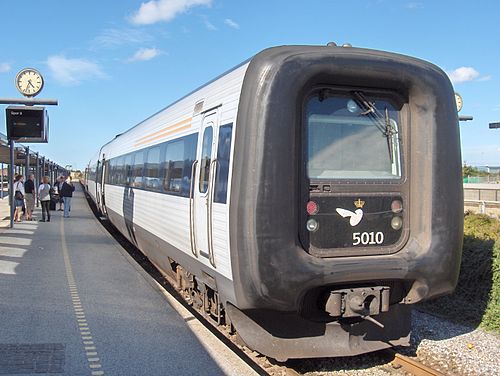




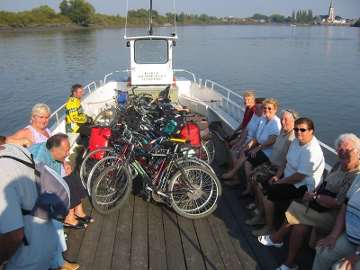

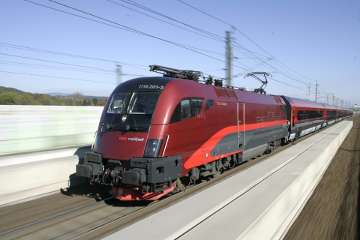 Railjet
Railjet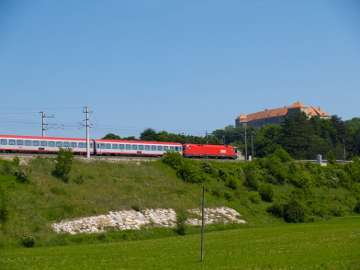
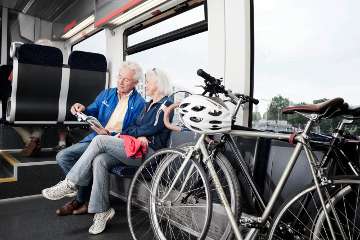



 REVIEW January 2014
REVIEW January 2014




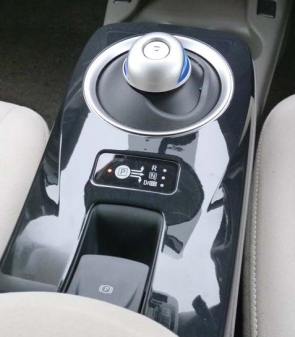
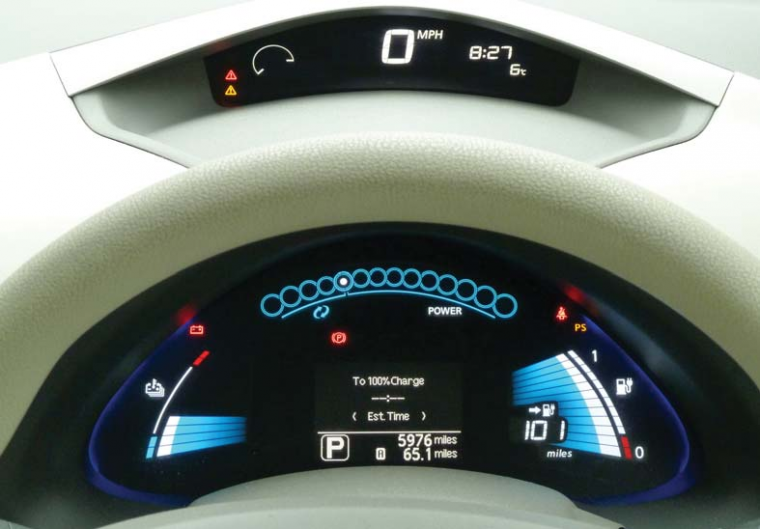

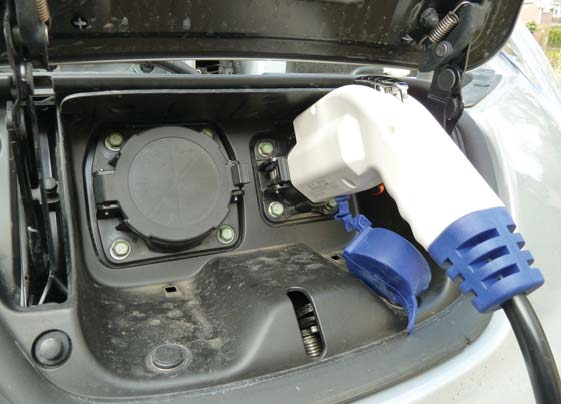

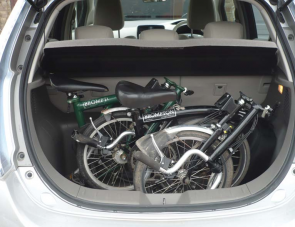
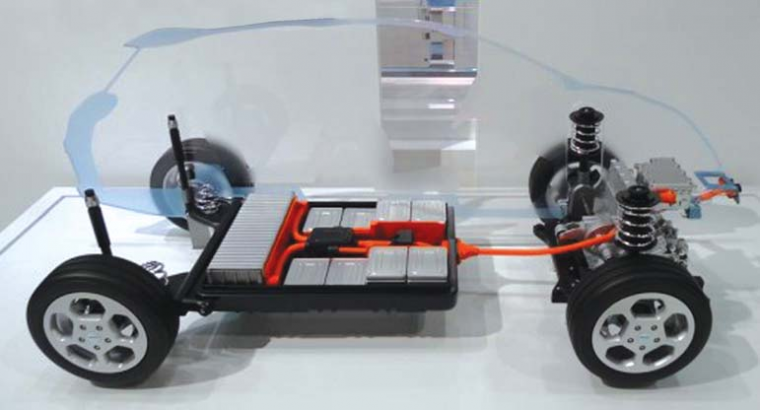
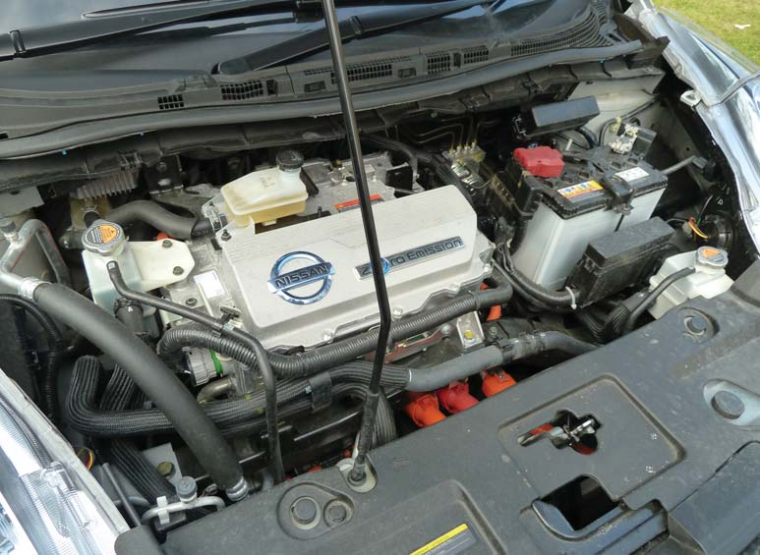

 This page used to list all non-electric folding bikes. Keeping the list up-to-date became increasingly difficult, as brands exploded, and prices fluctuated wildly, both on and off the web. In May 2017, we decided reluctantly to drop the ‘Under £500’ table altogether and replace it with a ‘wish list’ to help you make your own judgement.
This page used to list all non-electric folding bikes. Keeping the list up-to-date became increasingly difficult, as brands exploded, and prices fluctuated wildly, both on and off the web. In May 2017, we decided reluctantly to drop the ‘Under £500’ table altogether and replace it with a ‘wish list’ to help you make your own judgement.
 After a production run of over a quarter of a century, the Brompton remains the definitive folding bike. Revamped several times, the model range was completely reconstructed in 2005, with two new families – the sporty S-type and touring P-type. With the new bikes came a whole range of new accessories and options, from ball-bearing rollers for the rear rack to lightweight titanium frame parts. Folding the Brompton takes less than 15 seconds to a volume of 85 litres (3 cu ft) and it locks together, so it’s easy to carry. Unique to the Brompton is a range of pricey but effective luggage secured over the front wheel by a quick-release system. Rear suspension deals with the bumps and the small 16-inch wheels make the Brompton very maneuverable through traffic, its natural habitat. It weighs from about 10kg and is currently available with a 3-speed hub; 3-speed hub plus Brompton’s own 2-speed derailleur, producing an effective 6-speed; 2-speed derailleur, or single speed. Primarily a commuter machine, the Brompton can actually be ridden considerable distances thanks to its rear suspension and high-pressure tyres.
After a production run of over a quarter of a century, the Brompton remains the definitive folding bike. Revamped several times, the model range was completely reconstructed in 2005, with two new families – the sporty S-type and touring P-type. With the new bikes came a whole range of new accessories and options, from ball-bearing rollers for the rear rack to lightweight titanium frame parts. Folding the Brompton takes less than 15 seconds to a volume of 85 litres (3 cu ft) and it locks together, so it’s easy to carry. Unique to the Brompton is a range of pricey but effective luggage secured over the front wheel by a quick-release system. Rear suspension deals with the bumps and the small 16-inch wheels make the Brompton very maneuverable through traffic, its natural habitat. It weighs from about 10kg and is currently available with a 3-speed hub; 3-speed hub plus Brompton’s own 2-speed derailleur, producing an effective 6-speed; 2-speed derailleur, or single speed. Primarily a commuter machine, the Brompton can actually be ridden considerable distances thanks to its rear suspension and high-pressure tyres.


















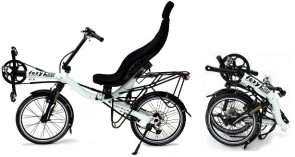



 To find bike carriage restrictions on individual railways and routes see our Bikes on Trains page covering
To find bike carriage restrictions on individual railways and routes see our Bikes on Trains page covering